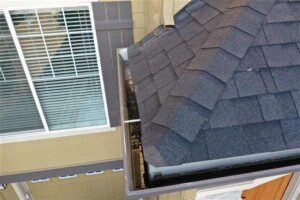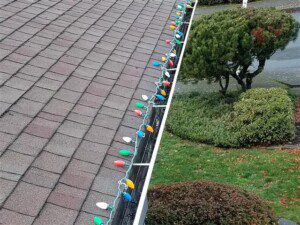
Gutters should be cleaned regularly to ensure that they can allow water to run unimpeded to the downspouts. However, if these gutters are not properly sloped, water can become pooled in the gutters or overflow to the ground below. This can result in corrosion and failure of the gutters, as well as potentially allowing water to penetrate into areas such as the basement or crawlspace. This can also cause water to overflow under the eaves, resulting in leakage into the home and cause significant damage to the eaves, soffits, interior ceilings and walls.

To check if your gutters are properly sloped, carefully look inside the gutters after rainfall or after running some water through the gutters with a garden hose or bucket. Check to see if all of the water runs towards the nearest downspout efficiently and doesn’t pool or run in the wrong direction. If the water in the gutter does not run effectively towards the downspout and remains pooled in a portion of the gutter, this area of the gutters should be adjusted in order to prevent deterioration of the gutter and potential overflowing.
To calculate the slope of your gutters, take a long piece of string and attach one end to the highest part of the gutter and the other end to the downspout at the end. Use a level to ensure that the string is parallel to the ground. Measure the length of string between the two points (for example: if you have 40 feet of gutter, the gutter slope should be 1 inch). Taking the downspout end of the string, lower it the calculated amount and reattach it. After marking both ends of the string and removing it, make a chalk line between these two points to determine the line of your gutters and check to ensure that it falls within the calculated slope.
